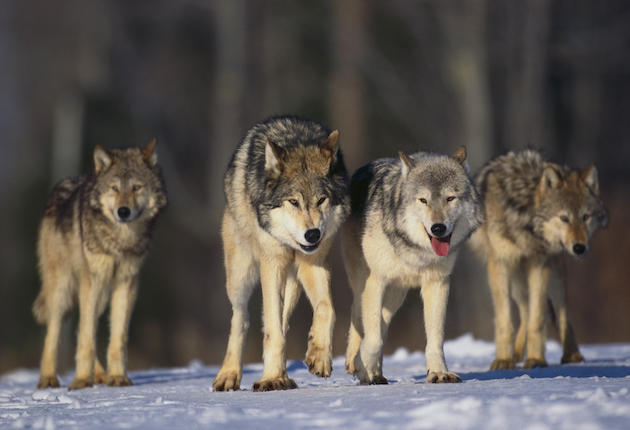Colorado’s Parks and Wildlife Commission made a lot of people glad and a lot of people mad last Wednesday by voting against admitting wolves into the state. Advocates were pushing for the reintroduction of gray wolves and the introduction of Mexican wolves into the state, but the PWC voted 7-4 against the efforts, consistent with two earlier decisions in the 20th century.
The commission cited its previous oppositions to wolves in 1982 and 1989 as part of its reasoning. for the vote. PWC also pointed out that Mexican wolves were not native to Colorado, and that gray wolves were already doing well elsewhere in the Rocky Mountains.
Colorado Public Radio reported that the U.S. Fish and Wildlife Service is currently compiling a recovery plan for Mexican wolves but has not decided to introduce Mexican wolves in Colorado. However, state officials believe the feds will try to introduce the non-native species and moved to block the Mexican wolves ahead of the decision.
Proponents said wolves would provide needed ecological balance and biological diversity. PWC ultimately voted no, in part, because of the effects wolves would have on livestock and big-game animals — two areas the state has a lot invested in. From its status as a hunting destination to its cattle and sheep, the pros didn’t outweigh the inevitable cons of bringing the predators to Colorado.
The Denver Post said the PWC wanted to show support for Colorado Gov. John Hickenlooper, who joined the governors of New Mexico, Arizona, and Utah in sending a letter to Secretary of the Interior Sally Jewell in November 2015. The letter opposed introducing Mexican wolves into areas they were not native.
The vote may be merely symbolic, though. The PWC said if wolves crossed the state line into the Centennial State it would not object. Wolves have recently spread from Oregon to California; Montana, Wyoming, and Idaho all have grays to the north; and the Mexican wolf can be found in Arizona and New Mexico to the south. The possibility of immigration from neighboring states is high.
The U.S. Fish and Wildlife Service estimates that wolves travel as much as 30 miles per day over territories as vast as 1,000 square miles. They can live up to 13 years in the wild and breed for at least 10, and with hunting for the canines all but impossible their numbers will only grow. Those ever-expanding packs will continue to push out from their current boundaries into unclaimed territories nearby.
Colorado could receive spillover wolves from other states with only a slight shift in the breeze, but one thing is for certain: The animals won’t return via the PWC’s efforts.
Cover Image: Thinkstock

